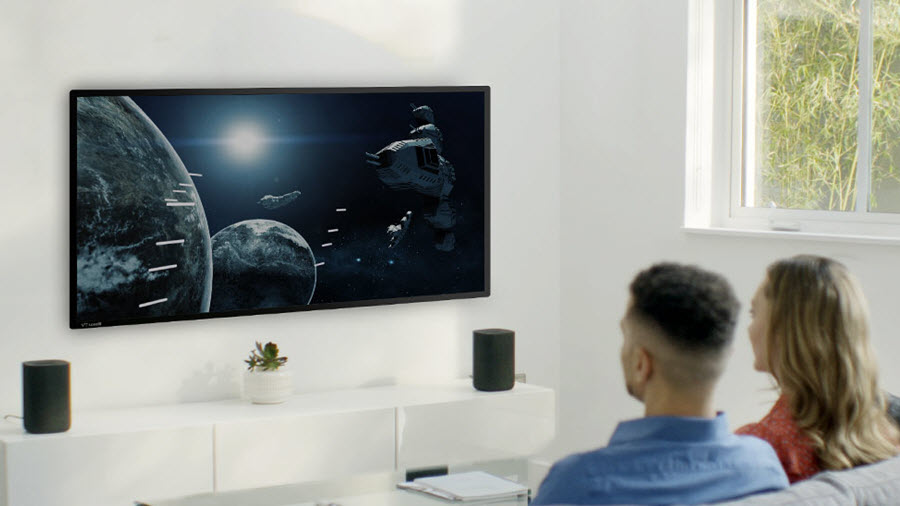CTA Ups Forecast for 2018 Home Tech Sales
Sales of 4K Ultra High Definition TV sets will climb 21% during the coming year, and revenue for subscription video streaming services will jump by 24% during the same period, according to the Consumer Technology Association's mid-year update of its "U.S. Consumer Technology Sales and Forecast," published Tuesday (July 31).

The semi-annual industry-wide update puts overall consumer technology sales up 6% by the end of this year compared with 2017, significantly higher than the annual growth rate of 3.9% predicted in CTA's January forecast.
CTA's January 2018 Report: Consumer Spending on Streaming Services to Reach $19.5B
The expected home technology growth is being spurred by a strong economy, low unemployment and the tax cut, according to CTA's analysis.
CTA foresees expansion in smart home and whole-home WiFi systems, which, along with streaming video, potentially affect cable operators and programmers' activities in those sectors. The rapid acquisition of 4K TV sets will offset the continuing flat sales for traditional HDTV receivers, possibly spurring networks to accelerate UHD delivery. CTA predicted that nearly 22.5 million 4K UHD sets will be sold in 2019, compared with 18.5 million this year and 16.7 million in 2017.
The sales pace of smart TVs will slow down: 33.8 million units last year, 35.2 million this year, 36.6 million in 2019, according to the CTA analysis. But that widespread penetration of Internet-accessible TV sets will be accompanied by continuing growth in sales of streaming media players (including sticks and set-top boxes): 17 million units last year, 18.6 million units this year and 19.7 million units next year, according to the CTA forecast.
Related Study: 74% of U.S. TV Homes Have at Least One Connected TV Device
CTA foresees consumer expenditures on streaming video services to reach $13.4 billion this year, and $16.6 billion in 2019, compared with about $4 billion in 2014.
"These services are expected to sustain healthy, double-digit growth rates for the foreseeable future as consumers explore the various content delivery platforms available to them," the report concluded. "Live TV streaming options are becoming more widely available this year, potentially attracting traditional pay-TV subscribers that have until now avoided cutting the cord for fear of losing their sports programming. With plentiful streaming options available, it is expected that viewers will continue to cut the cord to explore their ideal blend of streamed content."
Related: 'Consumer Reports' Guides Subscribers on Cord-Shaving
At the same time, home networking devices -- especially smart speakers as forerunners of the Internet of Things juggernaut -- will fly off retail (and online) shelves. And their presence will raise new competitive issues, especially as fifth-generation (5G) wireless technology is deployed.

“The new Internet of Things is the ‘Intelligence of Things’,” said Steve Koenig, CTA vice president of market research.“Connected products tap artificial intelligence to enhance services, especially in categories including smartphones, connected cars and smart home devices. And with 5G on our doorstep – the first 5G products will hit the market this year – we’re crossing into a new phase of faster and smarter connected devices.”
Rick Kowalski, CTA senior manager of market research and business intelligence, focused on the "huge shift in how people consume content." He emphasized the value of live streaming, which has "more consumers exploring their over-the-top video options." "This remarkable growth in streaming services shows us that the phrase ‘content is king’ is more relevant than ever,” Kowalski said.
CTA said it expects U.S. consumer technology revenue overall will reach $377 billion in 2018. CTA said that this year will mark the first time that whole-home WiFi products and artificial/virtual reality headsets hit the $1 billion wholesale revenue milestone.
Among the other hot categories, with expected wholesale revenue levels, are voice-controlled smart speakers ($3.2 billion) and smarthome devices such as thermostats, detectors, locks and doorbells ($4.6 billion). CTA acknowledges that "multi-year projections cannot account for unpredictable factors such as changes in tariffs, trade laws, interest rates and federal policy."
The CTA report is available for $2,000 to non-members of association.
Follows CTA/NCTA Agreement Extension
CTA's forecast came just days after the organization and NCTA – The Internet & Television Association announced a four-year extension of the "Voluntary Agreement for Ongoing Improvement to the Energy Efficiency of Small Network Equipment." They said the cross-industry initiative has improved the efficiency of home internet devices such as modems and routers by 20%.
Although the agreement is unrelated to CTA's sales forecasts, it exemplifies the co-dependency of the industries.
The Small Network Equipment (SNE) Voluntary Agreement was initially adopted in 2015 to build upon the success of a similar award-winning voluntary agreement for set-top boxes endorsed by the U.S. Department of Energy (DOE) in 2013. The extension of the voluntary agreement raises the bar for signatories by committing to meet new, more rigorous energy efficiency levels by 2020 that are on average 11% lower than the agreement’s current levels.
"The four-year extension of the voluntary agreement demonstrates our industry's commitment to approaches that assure our customers benefit from energy efficiency measures while maintaining our ability to develop new services and equipment which they demand,” said Neal Goldberg, NCTA’s general counsel.
Agreement signatories include the major broadband internet services providers serving 95 million U.S. households (89%of the market) -- AT&T, Cablevision, CenturyLink, Charter, Comcast, Cox Communications, Frontier and Verizon -- as well as leading device manufacturers Actiontec, ARRIS, D-Link, NETGEAR, Technicolor and Ubee Interactive.
Multichannel Newsletter
The smarter way to stay on top of the multichannel video marketplace. Sign up below.
Contributor Gary Arlen is known for his insights into the convergence of media, telecom, content and technology. Gary was founder/editor/publisher of Interactivity Report, TeleServices Report and other influential newsletters; he was the longtime “curmudgeon” columnist for Multichannel News as well as a regular contributor to AdMap, Washington Technology and Telecommunications Reports. He writes regularly about trends and media/marketing for the Consumer Technology Association's i3 magazine plus several blogs. Gary has taught media-focused courses on the adjunct faculties at George Mason University and American University and has guest-lectured at MIT, Harvard, UCLA, University of Southern California and Northwestern University and at countless media, marketing and technology industry events. As President of Arlen Communications LLC, he has provided analyses about the development of applications and services for entertainment, marketing and e-commerce.

